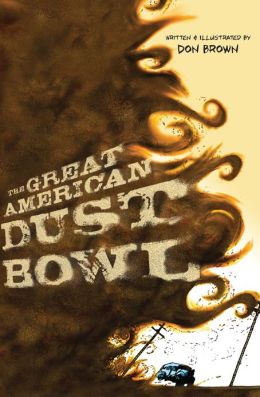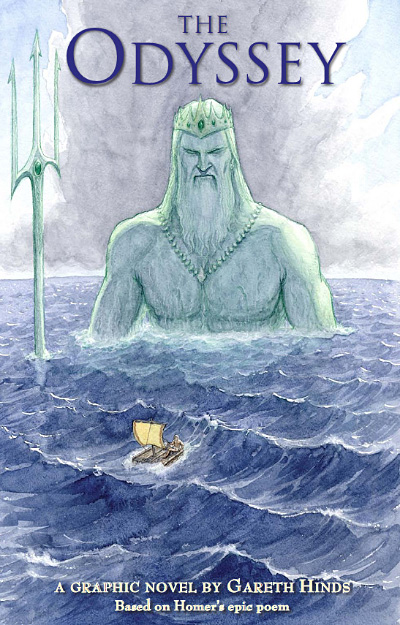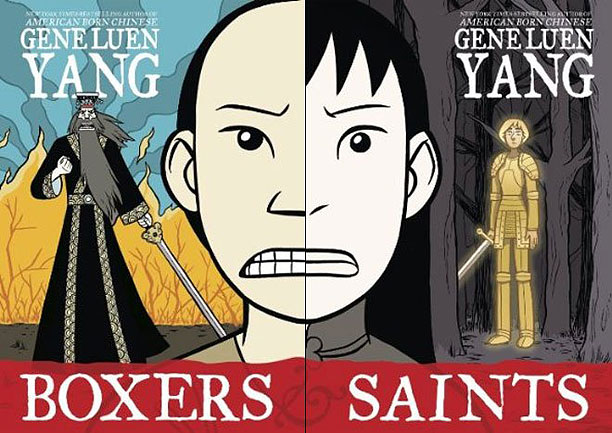 Concise and clear in imagery, text, and layout, Brown’s (Henry and the Cannons, 2013) nonfiction examination of the Dust Bowl contextualizes its genesis in geological and cultural history, the dynamics of its climatological presentation, and the effects on both the landscape and Depression-era High Plains farmers. The pen-and-ink artwork, digitally painted in burnished and dusty brown and yellow hues—and the shock of blue that comes with the rain that eventually clears the air—is combined with swirling text, along with well-researched and minimally descriptive explanations and occasional speech balloons attributed to anonymous residents and observers. The brevity of this presentation heightens rather than diminishes its power to evoke the history, and an ample list of resources provides plenty of opportunities for further research. A closing photo of the 2011 dust storm in Arizona emphasizes that the Dust Bowl wasn’t an isolated incident. This is a complete visual package, from the whirly, mud-colored cover design through the sudden reintroduction of color only after the dust storms abate. The Dust Bowl, as experienced by its survivors, truly comes to life in this compelling look at an important moment in American history.
Concise and clear in imagery, text, and layout, Brown’s (Henry and the Cannons, 2013) nonfiction examination of the Dust Bowl contextualizes its genesis in geological and cultural history, the dynamics of its climatological presentation, and the effects on both the landscape and Depression-era High Plains farmers. The pen-and-ink artwork, digitally painted in burnished and dusty brown and yellow hues—and the shock of blue that comes with the rain that eventually clears the air—is combined with swirling text, along with well-researched and minimally descriptive explanations and occasional speech balloons attributed to anonymous residents and observers. The brevity of this presentation heightens rather than diminishes its power to evoke the history, and an ample list of resources provides plenty of opportunities for further research. A closing photo of the 2011 dust storm in Arizona emphasizes that the Dust Bowl wasn’t an isolated incident. This is a complete visual package, from the whirly, mud-colored cover design through the sudden reintroduction of color only after the dust storms abate. The Dust Bowl, as experienced by its survivors, truly comes to life in this compelling look at an important moment in American history.\
In American Born Chinese (2006), Yang spoke to the culture clash of Chinese American teen life. In Boxers—the first volume in a two-book set, concluding with Saints (2013)—about the Boxer Rebellion at the end of the nineteenth century in China, he looses twin voices in harmony and dissonance from opposite sides of the bloody conflict. Boxers follows a young man nicknamed Little Bao, who reacts to religious and cultural oppression by leading the uprising from the provinces to Peking, slaughtering “foreign devils” and soldiers along the way. Between the two books, Yang ties tangled knots of empathy where the heroes of one become the monsters of the other. Little Bao and his foil from Saints, Four-Girl, are drawn by the same fundamental impulses—for community, family, faith, tradition, purpose—and their stories reflect the inner torture that comes when those things are threatened. Yang is in superb form here, arranging numerous touch points of ideological complexity and deeply plumbing his characters’ points of view. And in an homage to the driving power of stories themselves, Bao is captivated by visions sprung from lore: the spirits he believes possess him and his fighters. Much blood is spilled as Little Bao marches toward his grim fate, which is even more unsettling given that Yang hasn’t fundamentally altered his squeaky clean, cartoonishly approachable visual style. A poignant, powerhouse work of historical fiction from one of our finest graphic storytellers.
 As the proliferation of recent Odyssey graphic novelizations approaches the record held by Shakespeare adaptations, it is perhaps appropriate that Hinds, the Bard’s premiere sequential adapter, should produce the most lavish retelling of Homer yet. Showing great artistic evolution since his rough-and-tumble Beowulf (2007), Hinds lets the epic story take its time, with a slow build and pages that aren’t afraid to alternate packed dialogue with titanic action. The sumptuous art, produced with grain, texture, and hue, evokes a time long past while detailing every line and drop of sweat on Odysseus’ face and conveying the sheer grandeur of seeing a god rise out of the ocean. Teens may be baffled by the hero’s commitment to the same pantheon of gods who heap trouble in his path, but they will not lose touch with the universal qualities of steadfastness that Odysseus still embodies. The mythic trials have seldom felt more grueling or genuine, and this makes a perfect pairing with Tim Mucci and Ben Caldwell’s adaptation for a slightly younger audience from the All-Action Classics series, affording a chance to see how an archetypal story can function so powerfully at both the realistic and the stylized ends of the artistic spectrum. A grand example of Hinds’ ability to combine historical adventure with human understanding.
As the proliferation of recent Odyssey graphic novelizations approaches the record held by Shakespeare adaptations, it is perhaps appropriate that Hinds, the Bard’s premiere sequential adapter, should produce the most lavish retelling of Homer yet. Showing great artistic evolution since his rough-and-tumble Beowulf (2007), Hinds lets the epic story take its time, with a slow build and pages that aren’t afraid to alternate packed dialogue with titanic action. The sumptuous art, produced with grain, texture, and hue, evokes a time long past while detailing every line and drop of sweat on Odysseus’ face and conveying the sheer grandeur of seeing a god rise out of the ocean. Teens may be baffled by the hero’s commitment to the same pantheon of gods who heap trouble in his path, but they will not lose touch with the universal qualities of steadfastness that Odysseus still embodies. The mythic trials have seldom felt more grueling or genuine, and this makes a perfect pairing with Tim Mucci and Ben Caldwell’s adaptation for a slightly younger audience from the All-Action Classics series, affording a chance to see how an archetypal story can function so powerfully at both the realistic and the stylized ends of the artistic spectrum. A grand example of Hinds’ ability to combine historical adventure with human understanding.reviews from Booklist

No comments:
Post a Comment